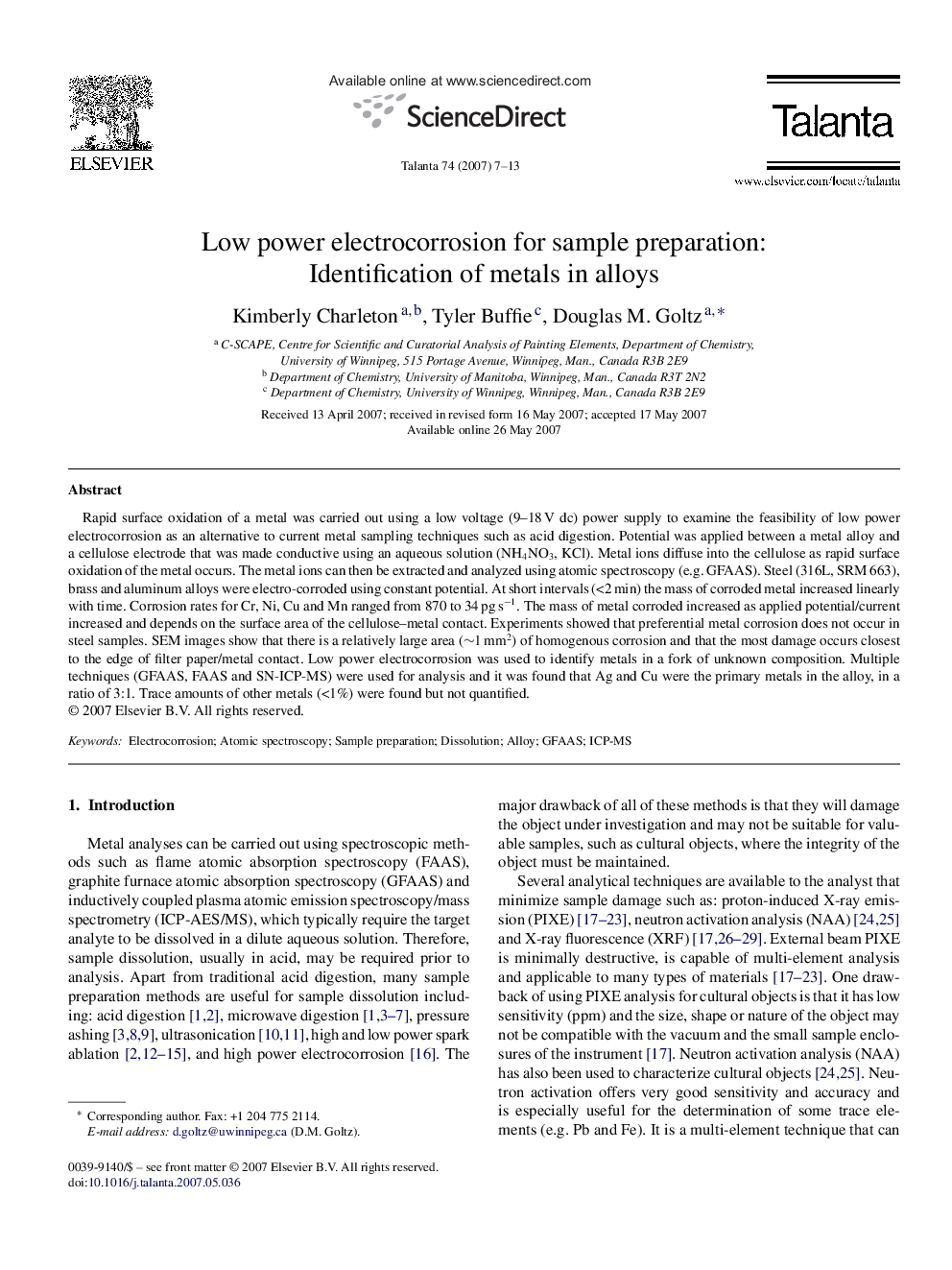| کد مقاله | کد نشریه | سال انتشار | مقاله انگلیسی | نسخه تمام متن |
|---|---|---|---|---|
| 1245808 | 969735 | 2007 | 7 صفحه PDF | دانلود رایگان |
عنوان انگلیسی مقاله ISI
Low power electrocorrosion for sample preparation: Identification of metals in alloys
دانلود مقاله + سفارش ترجمه
دانلود مقاله ISI انگلیسی
رایگان برای ایرانیان
کلمات کلیدی
موضوعات مرتبط
مهندسی و علوم پایه
شیمی
شیمی آنالیزی یا شیمی تجزیه
پیش نمایش صفحه اول مقاله

چکیده انگلیسی
Rapid surface oxidation of a metal was carried out using a low voltage (9-18 V dc) power supply to examine the feasibility of low power electrocorrosion as an alternative to current metal sampling techniques such as acid digestion. Potential was applied between a metal alloy and a cellulose electrode that was made conductive using an aqueous solution (NH4NO3, KCl). Metal ions diffuse into the cellulose as rapid surface oxidation of the metal occurs. The metal ions can then be extracted and analyzed using atomic spectroscopy (e.g. GFAAS). Steel (316L, SRM 663), brass and aluminum alloys were electro-corroded using constant potential. At short intervals (<2 min) the mass of corroded metal increased linearly with time. Corrosion rates for Cr, Ni, Cu and Mn ranged from 870 to 34 pg sâ1. The mass of metal corroded increased as applied potential/current increased and depends on the surface area of the cellulose-metal contact. Experiments showed that preferential metal corrosion does not occur in steel samples. SEM images show that there is a relatively large area (â¼1 mm2) of homogenous corrosion and that the most damage occurs closest to the edge of filter paper/metal contact. Low power electrocorrosion was used to identify metals in a fork of unknown composition. Multiple techniques (GFAAS, FAAS and SN-ICP-MS) were used for analysis and it was found that Ag and Cu were the primary metals in the alloy, in a ratio of 3:1. Trace amounts of other metals (<1%) were found but not quantified.
ناشر
Database: Elsevier - ScienceDirect (ساینس دایرکت)
Journal: Talanta - Volume 74, Issue 1, 15 November 2007, Pages 7-13
Journal: Talanta - Volume 74, Issue 1, 15 November 2007, Pages 7-13
نویسندگان
Kimberly Charleton, Tyler Buffie, Douglas M. Goltz,